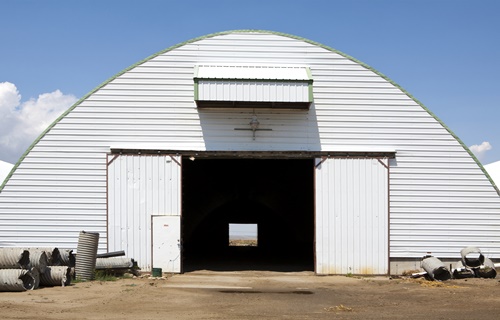Is There Asbestos in Old Hangars?

Asbestos was appealing to last century's manufacturers and builders for its versatility and affordability. As an excellent heat and chemical-resistant material, asbestos doesn't corrode and performs well in insulations.
In addition to being extremely resistant, asbestos fibers' flexibility allows them to be mixed into various industrial applications. Few materials used for manufacturing have these characteristics, which made asbestos a popular choice for producing thermal, chemical, and fire-resistant items. Nowadays, it is a known fact that residential buildings built before the 1980s contain asbestos products to various degrees.
Old hangars are no exception, as the toxic mineral inundated the markets during World War II. Historical hangars all around the country speak of those times and are a potential source of asbestos exposure even today. Wear and tear can damage insulation or products made with asbestos over time, but the material represents a health risk only when it's disturbed and its microscopic particles become airborne. The inhaled or ingested sharp-edged fibers cause irreversible damage to major organs and lead to severe asbestos illnesses like cancer or acute respiratory conditions such as:
Civilian airport hangars were built to house aircraft, and the military took over many of them as wartime came, improving them with new asbestos insulation. The ones built specifically for the war effort had to be ready and functioning as soon as possible, and applying asbestos was convenient. Although many of these structures are historical landmarks of the counties they are located in, they represent a permanent exposure risk to the communities living near military facilities.
The poster child of such a case was the fire that burned the historic base hangar in Orange County at the former Tustin Air Base. The fire raised environmental concerns and confirmed health risks when the EPA detected asbestos and other hazardous chemicals in the debris. Just as fire-damaged older homes threaten our and our neighbors' health by exuding these materials, large hangars multiply the danger by contaminating the air of larger communities.
Officials have collected air samples near the hangar and in nearby communities to analyze for gaseous air toxics such as benzene and asbestos. When communities are at risk, monitoring is necessary for metals such as lead and arsenic. During the Tustin hangar fire, firefighters faced the immense danger of prolonged exposure to toxic asbestos fibers released into the air. Additionally, they had to deal with other particulate matter release by:
- intense flames
- structural collapse
Following the hangar fire, health officials warned about residual smoke and ash from gusty winds, a potential health risk to residents. Furthermore, demolishing the hangar remains an intricate challenge, and cleanup becomes difficult under these circumstances.
Learning From the Trustin Hangar Fire Lesson
This event is a tragic reminder of the unmanageable risks posed by asbestos, and the exposure risks many communities face even today. Such extensive threaths of asbestos and other toxic materials underline the necessity of education and preparedness of the communities to effectively respond when fire or other disasters happen and dangerous toxins are released. On an individual level, you can prepare an emergency kit that can protect you from asbestos exposure in the aftermath of an extreme event. Part of preparedness is testing your home for asbestos - it is the only way to know if it contains the hazardous material. The tests are done by licensed professionals who can locate the dangerous mineral and will also be able to handle it safely.
